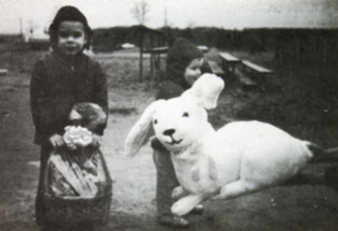The Supreme Court, after hearing the arguments that were presented at the district court, made its decision on December 12, 1961. The court looked at the issue in a slightly different way than Judge Clark had. Clark had felt that since the town had not provided services to the power plant (since the plant did not need any), the only reason for the plant being in the town was for taxes. Therefore, the plant could leave. The Supreme Court did not deny that the town had not supplied services, but it looked at it as "was the town capable" of providing the services. The answer was "yes." The lower court severance suit decision was reversed.
Supreme Court Ends Ipalco Bid
After Iowa Power's request for a rehearing was denied on February 5, 1962, Judge Clark dismissed the suit altogether. That ended Ipalco's attempt to join with Des Moines and implement its five-part program. Also, Judge Clark now lifted the injunction on the sewer project. The way was clear for "the little rich town," as a Des Moines Register editorial called it, to expand.
The long court battle with Ipalco did not mean the town council did nothing else. Some of the actions taken in 1960 were adopting an ordinance for garbage collection and disposal and accepting Norman Cox's low bid for garbage service. The city bought land from a Mr. Cunningham for a sewage disposal site. The sewer project was started by issuing $300,000 worth of sewer bonds, approving the plans and specifications, and letting bids for the work. (The Ipalco suit halted the sewer construction for a time.)
Other 1960 action included the development of Doanes Park. The town put in a ball diamond and a limited picnic area. On April 4, the Pleasant Hill Board of Health as organized. The council considered having the town hall on Vandalia Road but gave up the idea. Finally, in 1960, the council approved of Norman Strayer's property as a dump site. All of the council's energy was directed towards providing the services needed by a growing town.

New Streets, New Homes
Another project of the 1960’s that added to the town’s development was the paving of the streets. According to Phil Hildebrand, hired as director of public works on March 1, 1962, the majority of roads were gravel. In 1960, the town had ten and one-half miles of roads, of which only three and one-third miles were paved. Another one and one-half miles were paved that year, but the big paving project occurred from 1962 to 1963. Housing developers had to also pave their streets. The street locations in developments had to conform with the Planning and Zoning Commission's and town council's plans.
During the 1960's, the housing developments were rapidly springing up. James Bianchi owned land to the west and south of Doanes Park. He, through B & C Construction Company, subdivided the land and built houses. Another major developer was Hawkeye Homes headed by Richard Henry and Don McGillivray. Through an agreement with C. P. Hurd, who owned a lot of land in the central part of town but wanted to retire, Hawkeye Homes developed the areas that became known as Hurd's Hickory Heights. (Henry bought out McGillivray in the early 1970's and continued developing Hickory Heights as well as other subdivisions.) Later, others such as Don Anderson and John Shattuck and Stanbrough Realty developed different parts of the town. In the process, the town of country estates with horse pastures in back yards and few roads became a town.